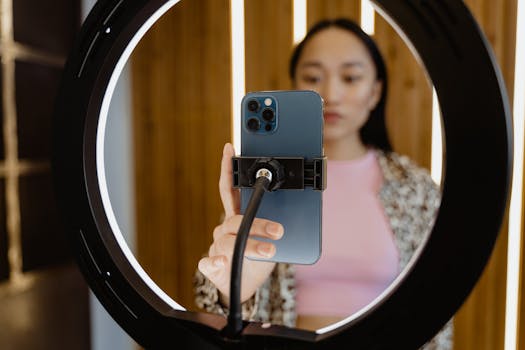Anúncios
Can a single focused half hour change the way you get work done? In this article you’ll learn how to apply technology 30min to compress planning, execution, and review into one approachable sprint you can use today.
This short guide shows ethical, measurable, and simple practices. You’ll set up phone and computer limits, use a visual timer, and pick one small deliverable to finish in a single window of focused work.
Expect practical steps: make time visible, reduce site switching, and capture just enough information to see what helped and why. Use built-in tools like Screen Time or a visual timer and keep a light note for quick measurement.
The aim is not a promise but an experiment. Test on a small scale, measure results, and adapt to your context. By the end of this post you’ll have a repeatable step you can run between meetings or during a lunch hour.
Introduction
Use a compact focus window to make visible progress in a crowded day. Remote and hybrid work fragment your attention. A clear half-hour creates a tight, repeatable routine you can try between meetings or during lunch.
Anúncios
Why this small focus block matters today
Your attention faces constant interruptions and context switches. Short, intentional blocks let you finish a few concrete things without waiting for a long stretch of free time.
What you’ll accomplish in a focused half hour
In one block you define a small deliverable, work on it, and capture quick metrics. Use built-in tools like iPhone Screen Time or Android Digital Wellbeing for privacy-respecting usage data.
- Start: pick one outcome and the minimum toolset.
- Do: execute the micro-task with a visible timer.
- Review: note results, a couple of questions, and the device data.
Ground rules: keep it simple, measurable, and ethical
Pick one outcome, reduce inputs, and respect privacy. Avoid tools that collect more than you need. The point is learning, not perfection, so keep notes and minimal metrics and then move on.
Anúncios
Quick start: What you need before the timer starts
Before you start the timer, do a quick setup so the half-hour is focused and friction-free. A tiny routine up front keeps the sprint simple and measurable.
Choose a single goal and a small deliverable
Write one-line success criteria. Keep the goal tight, for example: “send a call list to three clients” or “edit the opening paragraph.”
Pick a low-friction deliverable you can finish in the available time. That clarity prevents over-scoping and helps you win.
Pick your device mode: phone or computer
Decide which device fits the task. For message triage or scheduling a call, your phone may be faster.
For writing or table work, choose the computer so you have a comfortable editing view and fewer context switches.
Set a distraction baseline using built-in tools
Quickly check Screen Time or Digital Wellbeing to capture a baseline. This lets you compare usage after the sprint without manual tracking.
Make a short list of assets: one doc, one tab, one app. Use do-not-disturb or focus modes and close unrelated tabs or apps.
- One-line goal + one small deliverable
- Decide device (phone or computer) and confirm numbers for any call
- Check your screen dashboard and limit obvious time-sink apps
- Keep a short list of needed items to avoid hunting during the block
apply technology 30min: a practical, time-boxed plan
A short, structured plan keeps you focused and gives you measurable outcomes at the end of the block. Follow clear minutes and steps so you finish a small deliverable with minimal fuss.
Minute 0–3: Define success and gather tools
Write one-sentence success criteria and name the single deliverable. Open only the one doc, tab, or app you need.
This prevents scope creep and cuts the chance you chase a new problem mid-sprint.
Minute 4–5: Configure focus settings
Turn on Focus or Do Not Disturb on your phone or computer. Enable app or site limits if available.
Keep a visible timer so the countdown keeps time top-of-mind.
Minute 6–25: Execute the micro-project
Work in one uninterrupted stretch. Use micro-milestones (for example, finish the intro by minute 12).
If you hit an unexpected blocker, note it in a “parking lot” line and pick the simplest workaround so you protect the time box.
Minute 26–30: Quick review and next step
Compare a few data points: planned vs. finished, interruptions, and whether Focus held. Use facts, not feelings.
Capture one issue and one idea for the next step, then decide when you’ll do it and calendar that end-of-day or next-day step.
- Keep your workspace to one document, one tab, one app.
- Use brief micro-milestones to pace the minutes.
- Close the session cleanly so the next step is easy to start.
Set your devices for focus: Screen Time and Digital Wellbeing
Before you start the clock, tune your devices so they support focus rather than steal it. A quick setup uses built-in tools to limit distractions while keeping necessary alerts through.
iPhone Screen Time: app limits, Downtime, and Focus filters
Open Screen Time and review the weekly usage data. Set app limits for the categories that pull you away most.
Schedule Downtime for your sprint and enable Focus filters to silence nonessential message streams. Add exceptions for priority contacts so you don’t miss urgent items.
Android Digital Wellbeing: app timers and Focus mode
Check your Digital Wellbeing dashboard to see which apps dominate your screen time. Use app timers for those offenders.
Turn on Focus mode to pause distracting apps but allow calls or messages from a short list of people who matter.
Practical takeaways: block time-sink apps during the sprint
- Review recent usage data and pick two or three apps as targets.
- Use a restricted browser profile with only essential sites loaded to avoid rabbit holes.
- Document the small details that worked and any remaining questions for the next run.
Use a visual or Pomodoro timer to make time visible
A visible countdown turns abstract minutes into a clear signal to start, speed up, or stop. That clarity helps you treat the sprint as a single, manageable unit instead of an endless task.
Why visual countdowns aid focus (in practice)
A visual countdown keeps time tangible. Tools like the Time Timer MOD offer an immediate, glanceable display that many users say reduces wasted seconds and improves pacing.
If you’re learning something new, the timer limits research and nudges you toward quick practice instead of long reading sessions.
Classic Pomodoro cadence vs. a single 30-minute block
The classic Pomodoro is 25 minutes on, 5 minutes off. For this workflow, a single 30-minute block cuts transition overhead and gives a clear finish line.
Try both and pick what fits your work rhythm; consistency is the real point — repeated cadence trains your brain to enter focus faster.
Tip: keep the timer in sight, notifications out of sight
Keep one visible timer and silence nonessential alerts. A single mid-session glance is enough to adjust pace; frequent checks become their own interruption.
- Use a physical visual timer, phone/desktop countdown, or web Pomodoro.
- If you overshoot, try 28 minutes and save 2 minutes for a fast review.
- Capture one small tip or answer one quick question to improve the next sprint.
Optimize your browser for a 30-minute sprint
A trimmed browser setup can keep your sprint focused and free of accidental detours. Start with a short checklist so you open exactly what you need and nothing more.
Work profile: a “clean” browser with limited sites
Create a separate browser profile for your work so bookmarks, cookies, and extensions stay minimal.
Keep only essential bookmarks and one or two extensions. Set the new-tab page blank to avoid recommended links and time-sink suggestions.
Reader mode and tab discipline for less cognitive load
Use Reader mode to strip ads and sidebars on long articles. That reduces visual noise and helps you scan faster.
- One working tab, one reference tab max — treat extra tabs like rows in a table: add one, close one.
- Turn off extension badges and toolbar clutter so your view shows only what moves the task forward.
- If research is needed, write three guiding questions before you search to limit drift.
- Cache key data or a single document with links ahead of time to avoid detours during the sprint.
Quick tip: Prefer local notes when ideas pop up — jot them and close the tab. Return later.
After the session, review what slowed you down and remove that friction for the next approach. Small tweaks to your browser often give the biggest gains in focus and usable data about what works.
Example micro-projects you can finish today
Choose one small task that gives visible progress in under thirty minutes. Below are device-friendly examples and learning bursts you can complete this day. Each idea is scoped so you finish and log one clear outcome.
- Phone: draft a short post with a clear CTA, reply to five priority messages, and schedule one call to move a project forward.
- Phone: record a 60–90 second voice memo outlining next steps and share it with stakeholders immediately.
- Computer: do a quick data cleanup—normalize a small CSV, fix headers, or remove duplicates so future analysis is easier.
- Computer: write a tiny script to save a few clicks (rename files, export a list) or tweak your resume headline and one bullet for clarity.
- Learning: complete one LeetCode problem or a short tutorial segment. Note two questions you had and one concept to revisit.
Communications: prepare a concise call agenda with three bullet points and send it before dialing to keep the conversation on track.
Admin & creativity: clear ten emails using a strict triage rule—reply in two minutes, delegate, or schedule—or brainstorm five ideas and pick one to prototype in your next sprint.
“Small, repeatable wins compound faster than occasional marathon sessions.”
Measure what happened: lightweight analytics
A brief review after the session turns small wins into repeatable habits. Quick checks give you useful data without adding overhead.

Check device usage deltas
Right after the sprint, open iPhone Screen Time or Android Digital Wellbeing. Note the delta for the main distracting categories to see if your focus settings held.
Track three micro-metrics
- Finished deliverable: yes or no.
- Context switches: how many times you left the task.
- Blockers: any problem that cost extra minutes.
Keep a short private log
Write one line of information on what helped and one line on what to change. If research ballooned, note the type of query and create a simple rule for next time.
- Ask three questions: Did you hit the outcome? What caused the biggest delay? What will you adjust?
- Mark the end: archive notes, close tabs, and capture the next action on your task list.
- If a problem repeats, schedule a focused block to fix the root cause and share a one-sentence demo note with a candidate collaborator when helpful.
Team-ready variant: a 30-minute collective focus block
Gather your team for a focused half-hour and see what a tight, shared routine can uncover. Use a short, inclusive format that protects privacy and keeps work simple.
Five-minute kickoff: goal, roles, and success criteria
Start by restating the shared goal in one sentence. Name a facilitator, a timekeeper, and one owner for the main deliverable.
Agree on what “done” looks like and let each person bring one clarifying question so the work begins with fewer surprises.
Shared guardrails: do-not-disturb, app/site limits
Pick group norms: a single collaboration channel, group do-not-disturb, and limited app or site access.
Keep tools minimal — one document or board for updates — and track only essential data like completed subtasks and blockers.
Two-minute debrief: capture decisions and owners
At the end, spend two minutes recording decisions, assigning owners, and noting one next opportunity to follow up.
Rotate facilitation so ownership stays shared. Reinforce respectful communication and adapt norms for different schedules and accessibility needs.
“Use short, shared blocks to test collaboration patterns safely before scaling them.”
- Kickoff: goal, roles, and one question each.
- Guardrails: one channel, DND, and minimal sites.
- Debrief: decisions, owners, and the next candidate slot.
Ethical, safe, and inclusive use of technology
Design your short work blocks so they protect people and personal information.
Respect privacy and data policies when using analytics
Only gather the minimum information you need to learn. Use built-in applications like Screen Time or Digital Wellbeing when possible; they keep most usage data local and reduce risk.
Be explicit: state what you measure and the reason behind it. Store any notes securely and follow your organization’s privacy rules.
Accessibility: visual timers, readable modes, and pacing
Offer options so every team member can join. Visual timers, Reader modes, and simple text alternatives help people with different needs.
- Prefer local controls over invasive tracking tools to protect data and trust.
- Allow flexible pacing; adjust cadence for individual ability and comfort.
- Invite questions and make opt-in choices clear to build shared understanding.
- Avoid sharing screenshots with sensitive details—summarize or redact instead.
Remember: these practices treat tools as aids for human judgment, not replacements for it.
Common pitfalls and how to avoid them
Common traps can quietly eat your half hour unless you plan for them. Know the usual problem areas and set simple guardrails so you keep momentum.
Over-scoping: too many “things” for 30 minutes
Over-scoping is the most frequent problem. Pick one clear outcome and one or two things to do, then stop when time ends.
This point matters: adding new tasks mid-session dilutes focus and steals wins.
Tool chasing: swapping apps instead of doing work
Avoid tool chasing. Switching apps often feels productive but delays real progress.
Stick with the setup you started. If a blocker appears, note its name and move on.
- If your phone pulls you, move it out of sight or enable stricter Focus rules.
- Close extra tabs, hide the dock, and disable noncritical badges as quick tips.
- Choose two ways to reduce friction before you start, not during the sprint.
- Ask one question before opening a new tab: “Does this directly move my deliverable forward?”
- Keep a small library of known-good workflows so you reuse rather than rediscover tools.
Celebrate finishing one deliverable: completion habit beats perfection and builds momentum.
Conclusion
Treat each short window as a lab: test one change, record results, and repeat.
This simple approach helps you convert a single window into measurable progress by the end of the day. Use a visual timer, check Screen Time or Digital Wellbeing for quick data, and keep a small table of recurring tasks to pick from fast.
Keep notes brief—two or three lines of writing after each sprint. Ask two questions: What helped me focus? What will I change next time? These prompts turn minutes into learning and steady gains over hours.
Respect privacy when using applications and analytics. For more context on focused breaks and outcomes, see this research on focused breaks. Share a short post with your team and invite one candidate improvement for the next session.



